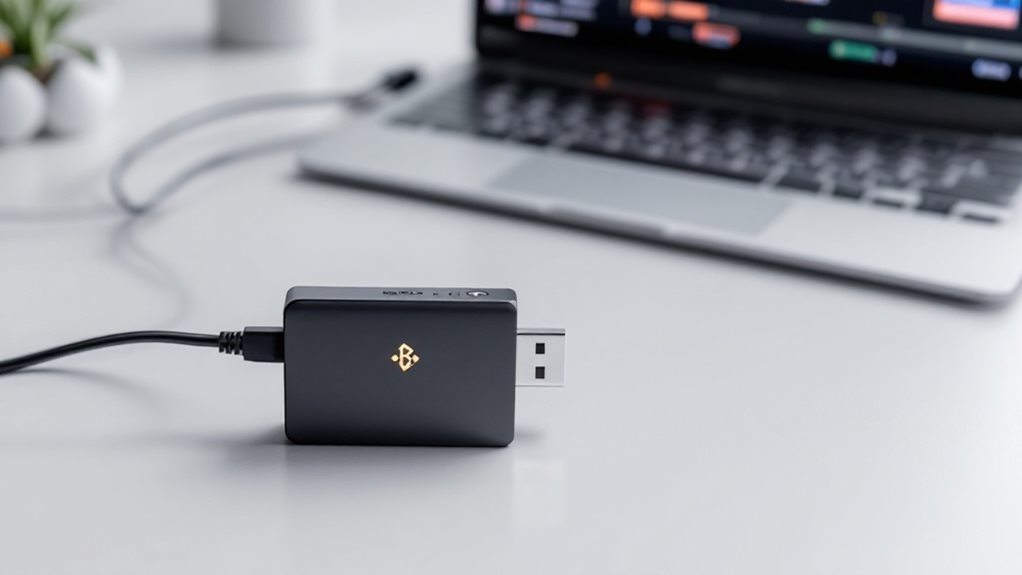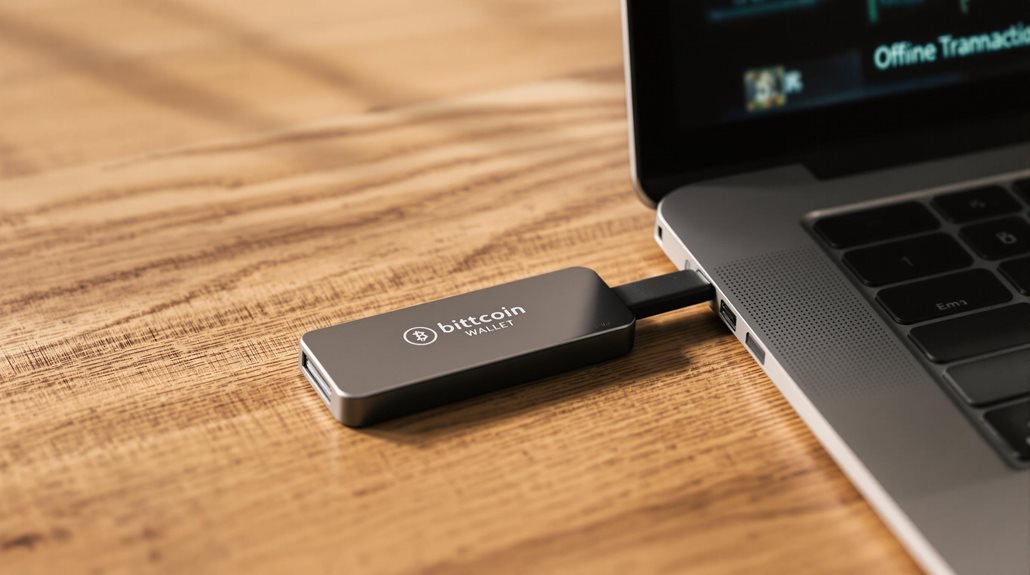A non-custodial wallet is a digital tool that gives users complete control over their cryptocurrency. Unlike traditional bank accounts or exchange wallets, users hold their own private keys – special codes needed to access and move their digital money. There's no middleman or third party managing the funds, which means users have total independence but also full responsibility for keeping their keys safe. The world of non-custodial wallets offers many features and benefits to explore.

A non-custodial wallet puts crypto owners in complete control of their digital assets. It's like having a personal bank in your pocket, but without any bank's involvement. Users of these wallets hold their private keys, which are crucial codes that give them direct access to their cryptocurrency. Popular non-custodial wallets include MetaMask, Trust Wallet, and Ledger.
These wallets operate differently from traditional banking systems because they don't need permission from any third party to work. When users want to send or receive crypto, they can do it instantly without waiting for anyone's approval. Non-custodial wallets can also work with many different types of cryptocurrencies at once, making them versatile tools for crypto users. Statistics show that 20% of Bitcoin has been permanently lost due to forgotten keys and lost wallets. The FTX bankruptcy crisis demonstrated why self-custody of crypto assets is crucial for security.
Security and privacy are major benefits of non-custodial wallets. Since users maintain full control of their private keys, they don't have to worry about exchange hacks or problems with custodial services. This independence becomes especially important during financial crises when traditional banks might face difficulties. People in countries with strict financial regulations often use these wallets to maintain control over their money. These wallets have become particularly important in Sub-Saharan Africa where cryptocurrency adoption provides financial services to the unbanked.
The technology behind non-custodial wallets aligns perfectly with blockchain's core idea of decentralization. Users don't need to trust any company or organization with their funds. They can check their balances, make transactions, and manage their crypto assets whenever they want, without any restrictions or limitations. These wallets enable peer-to-peer transactions directly on the blockchain network without intermediaries.
However, using a non-custodial wallet comes with significant responsibilities. Users must keep their private keys safe because if they lose them, they'll lose access to their funds forever. There's no customer service to call or password reset option. The only backup is a seed phrase, which is a series of words that can restore access to the wallet if needed.
Some people might find non-custodial wallets challenging to use at first. The interface can seem complicated, especially for those new to cryptocurrency. Users need to understand basic crypto concepts to use these wallets effectively. Unlike traditional banking apps, non-custodial wallets don't offer features like password recovery or fraud protection.
Despite these considerations, non-custodial wallets continue to grow in popularity. They represent a shift toward personal financial sovereignty in the digital age. As cryptocurrency adoption increases, these wallets provide a vital tool for anyone looking to maintain direct control over their digital assets without relying on traditional financial institutions or third-party services.
Frequently Asked Questions
How Do I Recover My Non-Custodial Wallet if I Lose My Device?
A lost device doesn't mean lost crypto funds.
Recovery of a non-custodial wallet mainly relies on the seed phrase – a set of 12-24 words created during setup.
If someone has their seed phrase stored safely, they can restore their wallet on a new device.
They'll just need to download a compatible wallet app and enter the seed phrase in the correct order.
That's it.
Can I Transfer Assets Between Custodial and Non-Custodial Wallets?
Yes, assets can be transferred between custodial and non-custodial wallets in both directions.
When moving from custodial to non-custodial, users initiate a withdrawal to their non-custodial wallet address.
For transfers from non-custodial to custodial, they'll need the platform's deposit address.
The process requires careful attention to network compatibility and address verification.
Transfers typically take a few minutes to complete, depending on network conditions.
What Happens to My Crypto if the Wallet Provider Goes Bankrupt?
If a non-custodial wallet provider goes bankrupt, it won't affect the user's crypto assets.
That's because the crypto isn't stored with the company – it's on the blockchain.
Users keep their own private keys, so they can still access their funds even if the provider shuts down.
They can simply use their seed phrase to recover their wallet through another compatible service.
The provider's financial problems don't impact the user's assets.
Are Non-Custodial Wallets Completely Safe From Hackers?
No wallet is completely safe from hackers.
While non-custodial wallets offer strong security through encryption and private key control, they still face risks. Hackers can exploit vulnerabilities through malware, phishing attacks, or keyloggers.
The main security weakness isn't usually the wallet's technology – it's human error. Users might accidentally share their private keys, fall for scams, or store their recovery phrase insecurely.
Hardware wallets provide the highest level of protection.
Which Non-Custodial Wallet Has the Lowest Transaction Fees?
Among popular non-custodial wallets, Trust Wallet typically offers some of the lowest transaction fees.
However, fees aren't fixed and depend mostly on network congestion and the blockchain being used.
MetaMask's customizable gas fees can also result in lower costs when properly adjusted.
It's worth noting that transaction fees aren't solely determined by the wallet itself – they're mainly influenced by the blockchain network's current conditions and usage levels.





